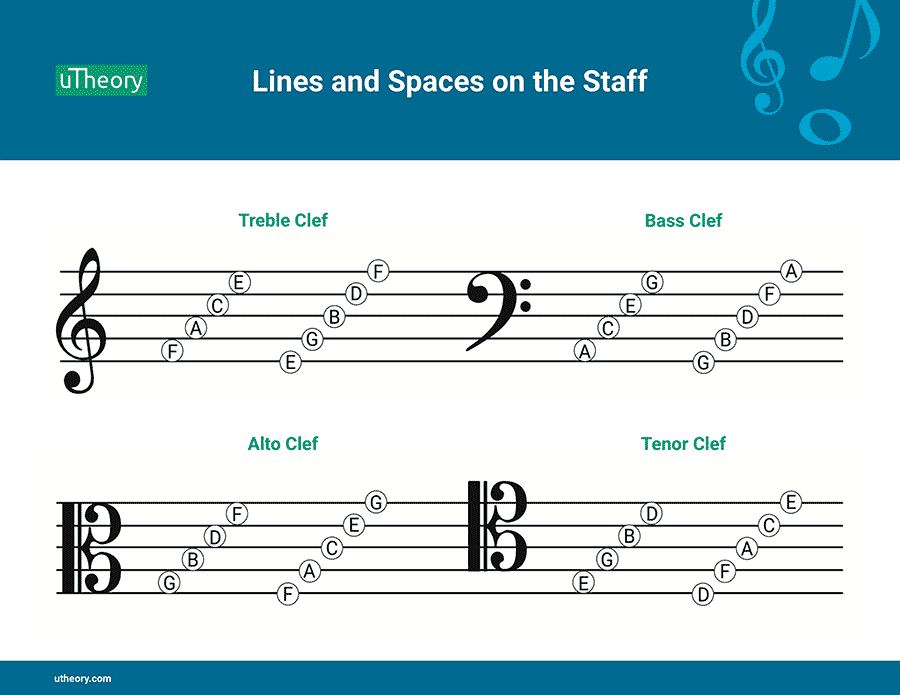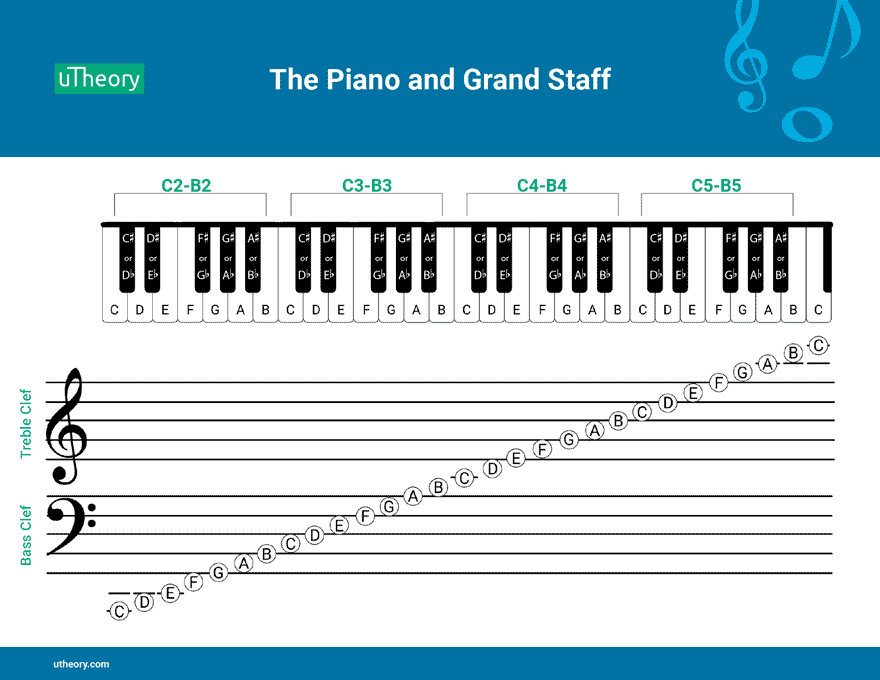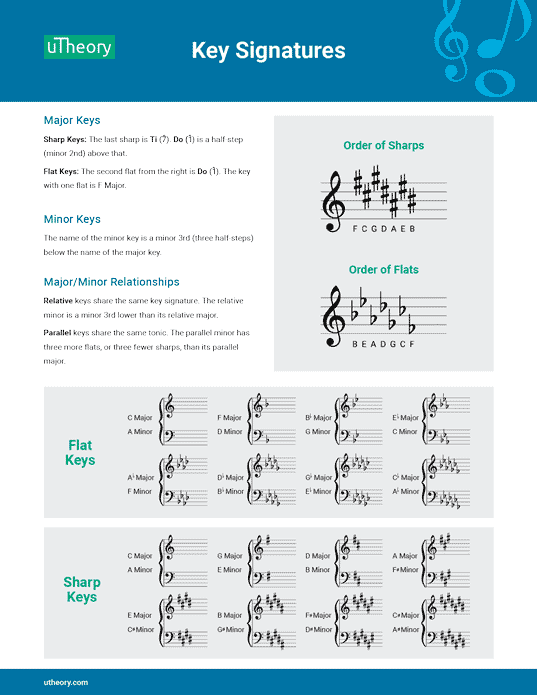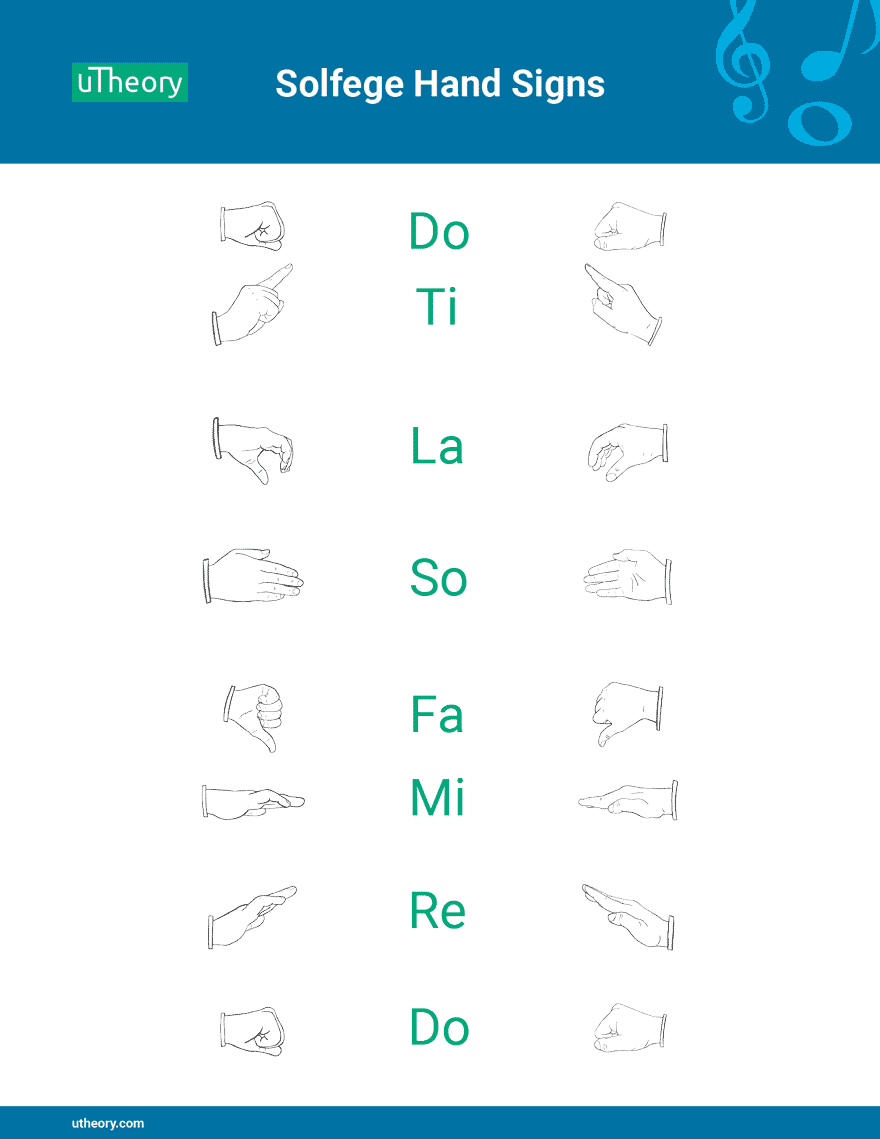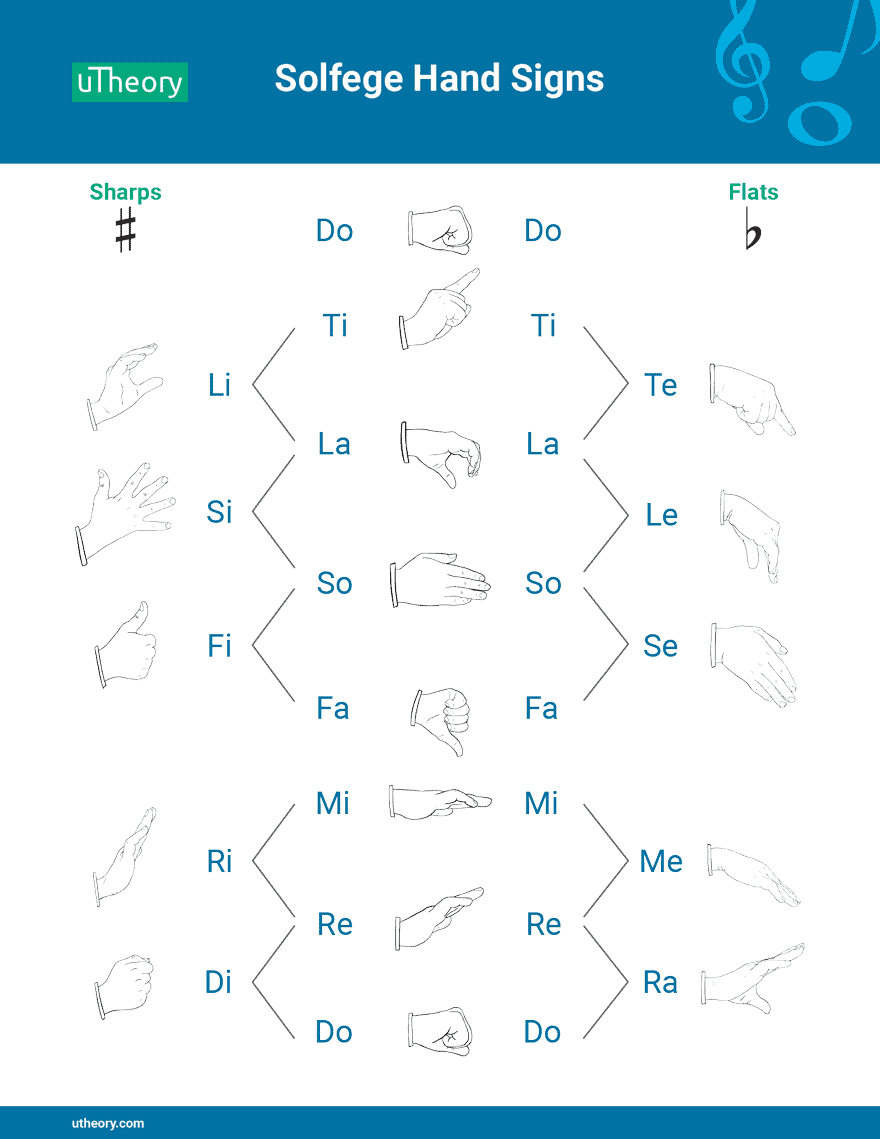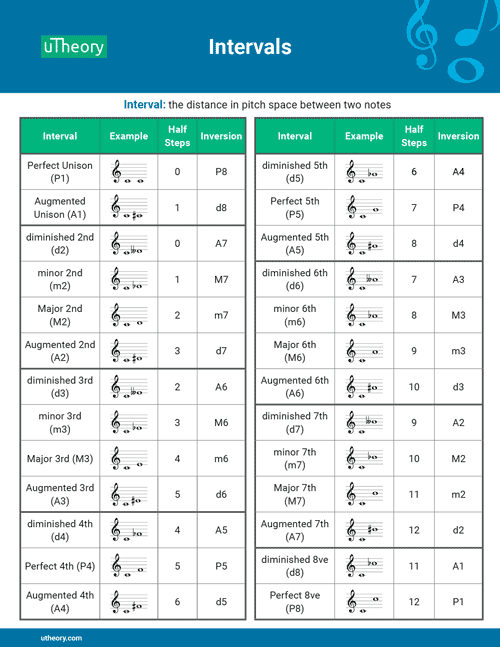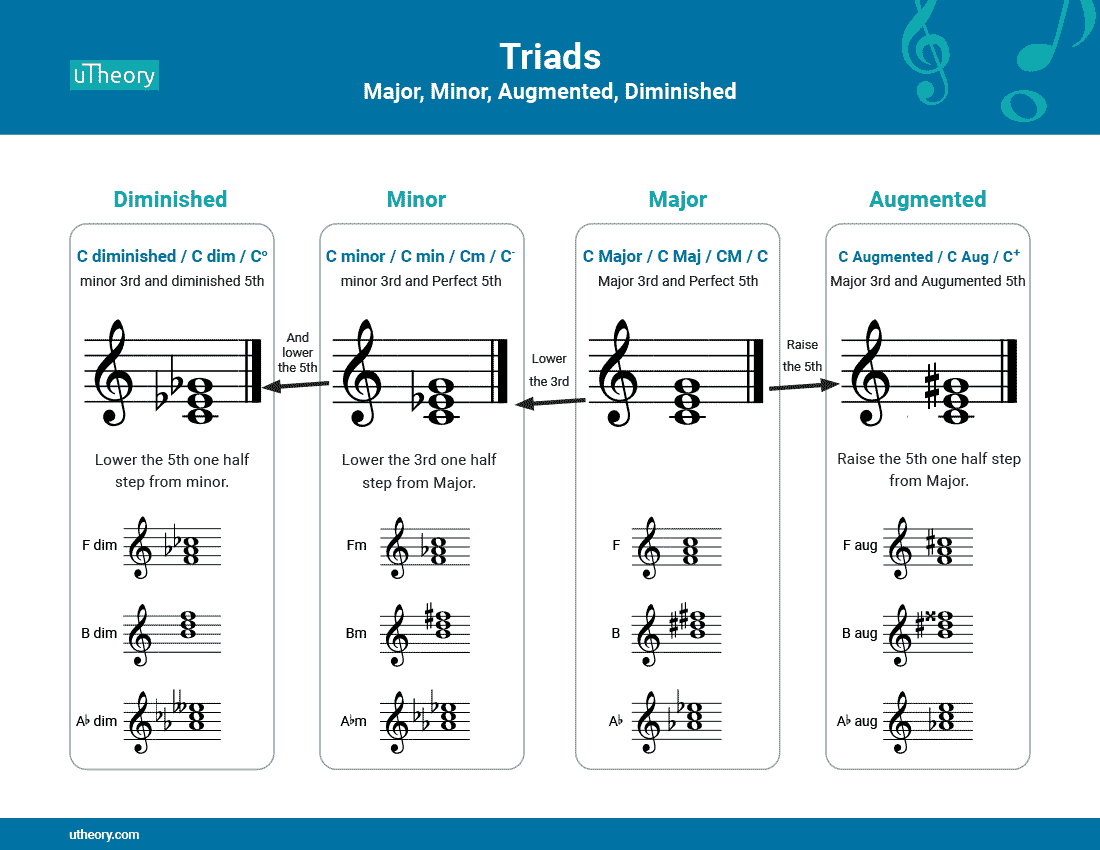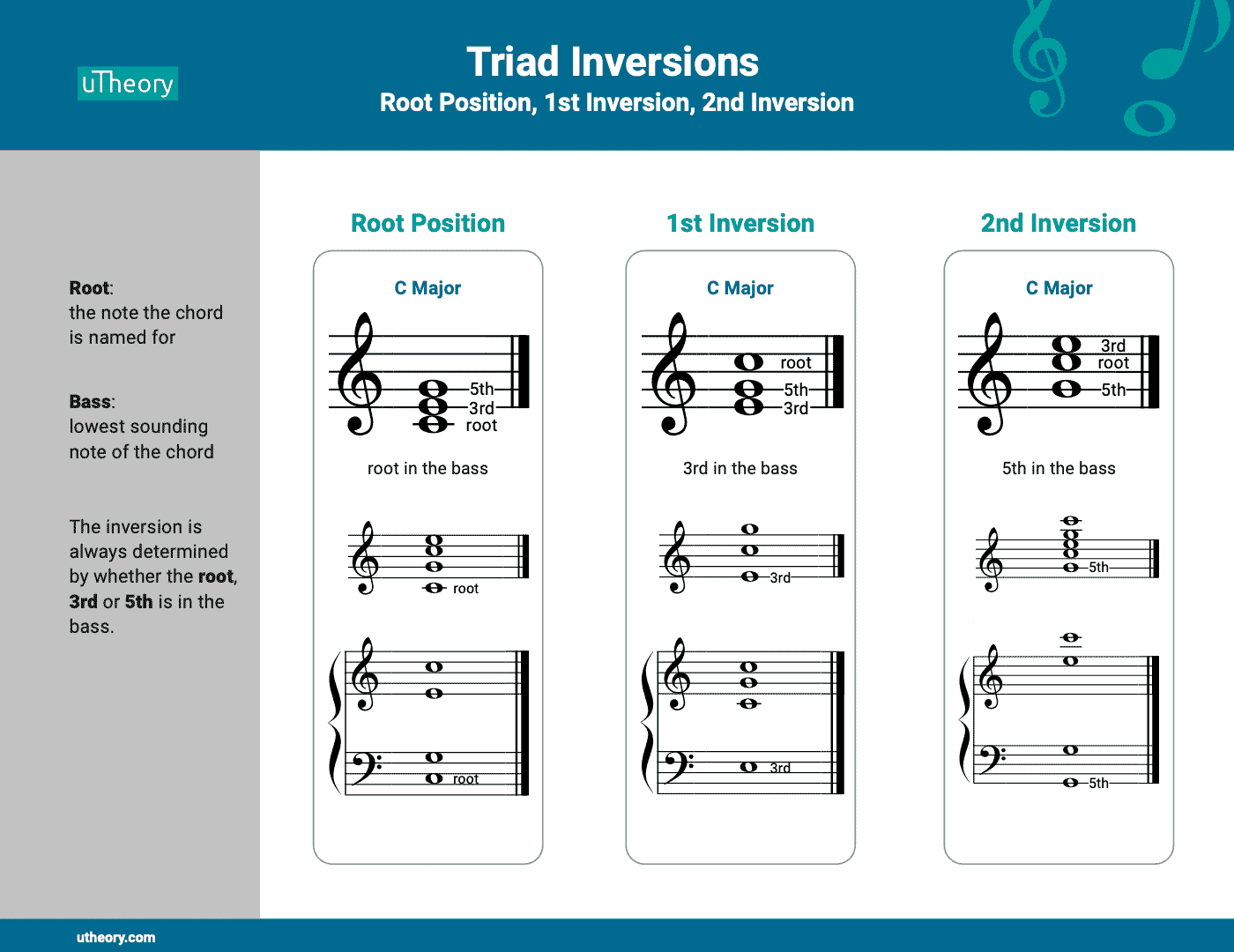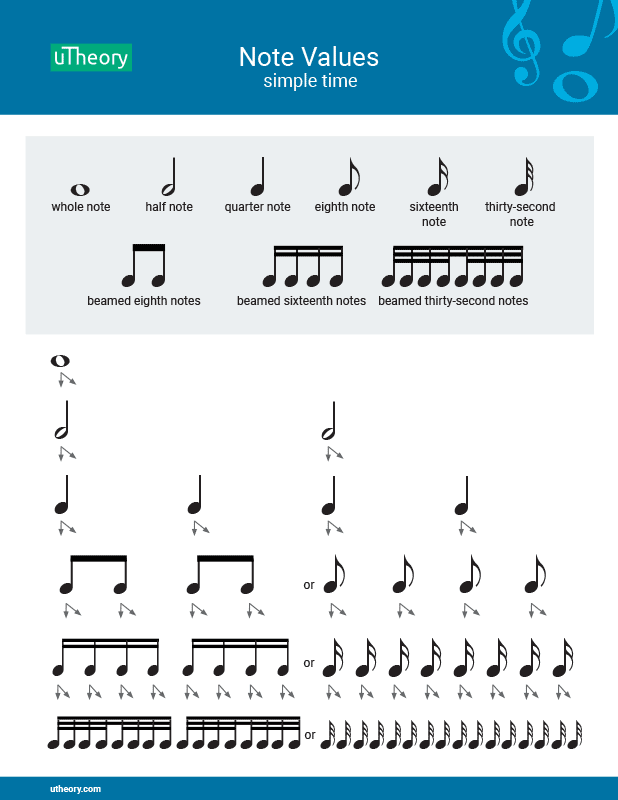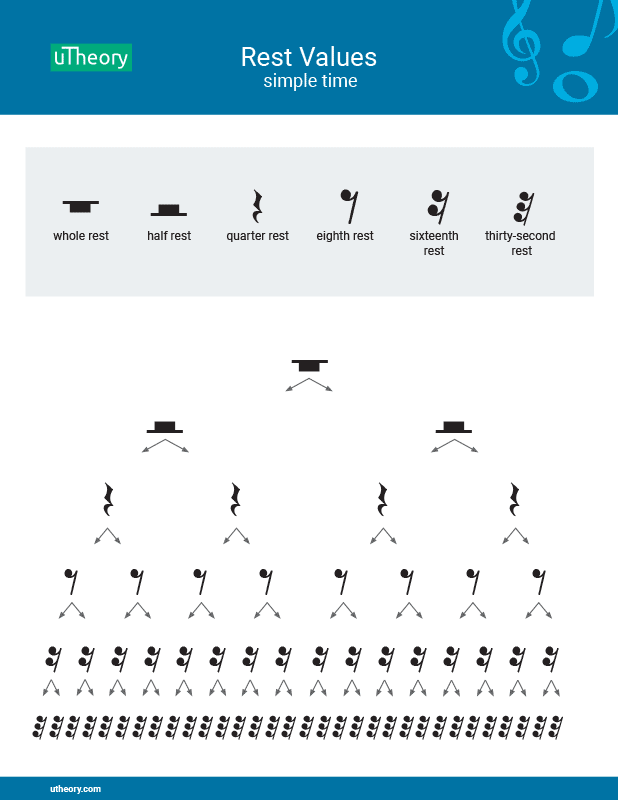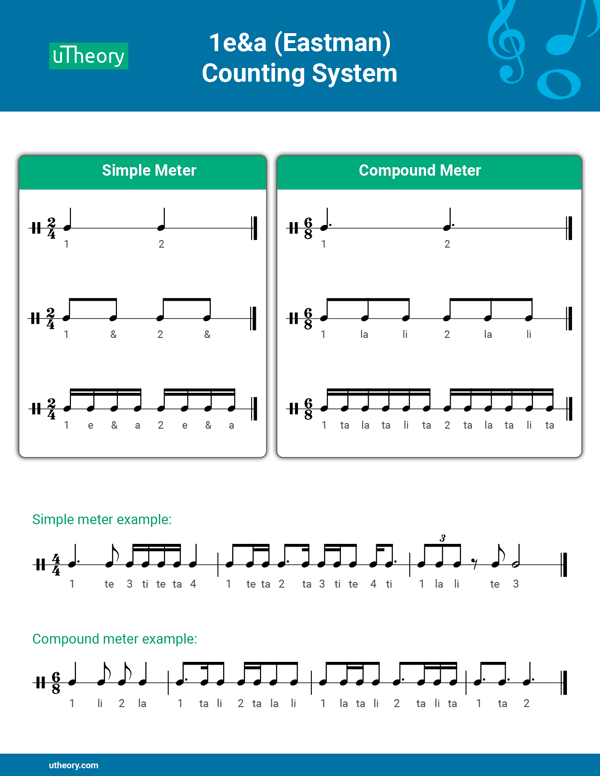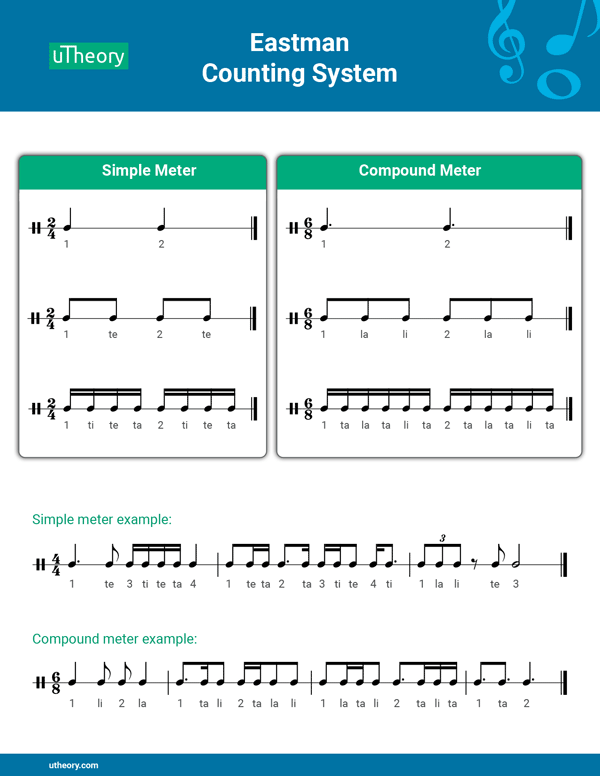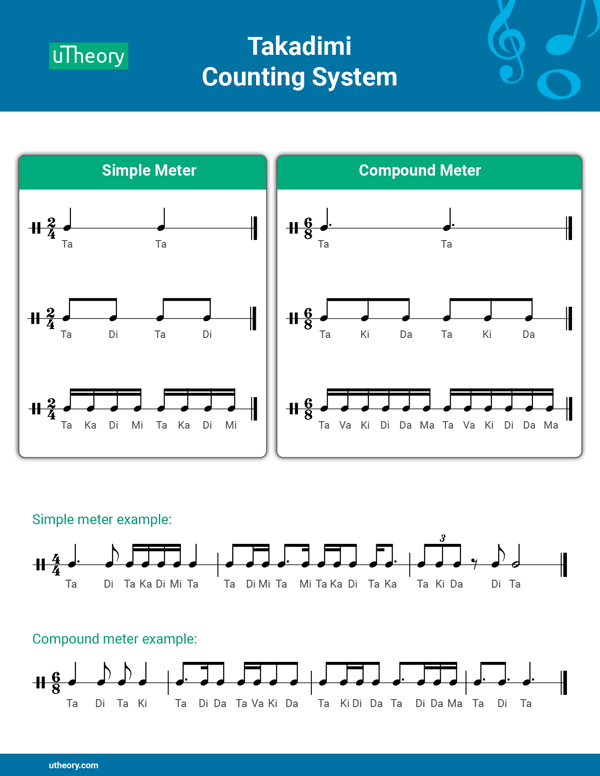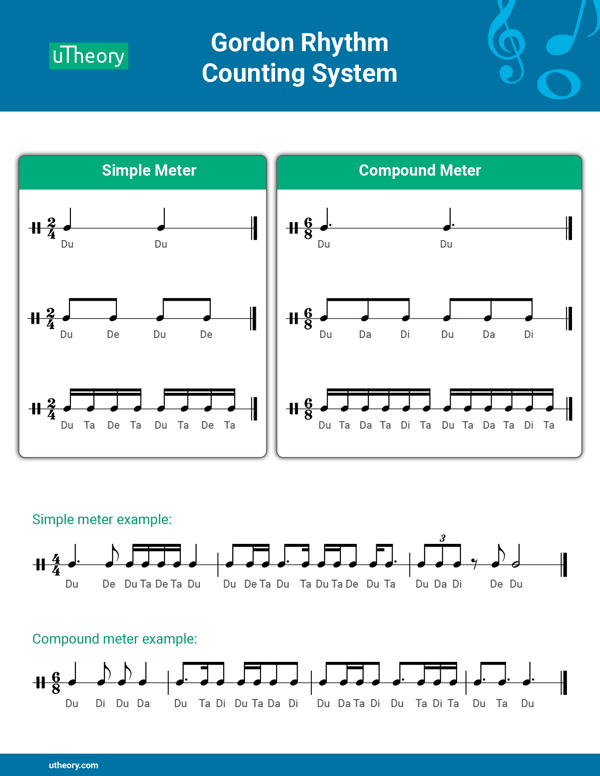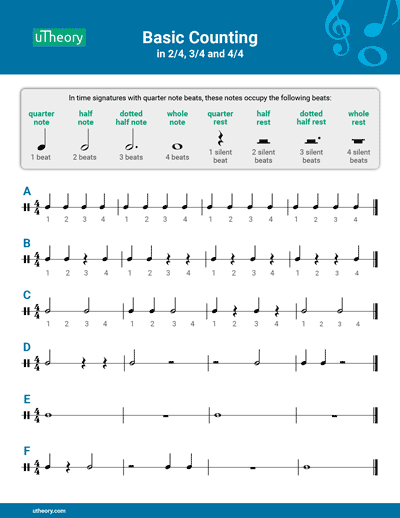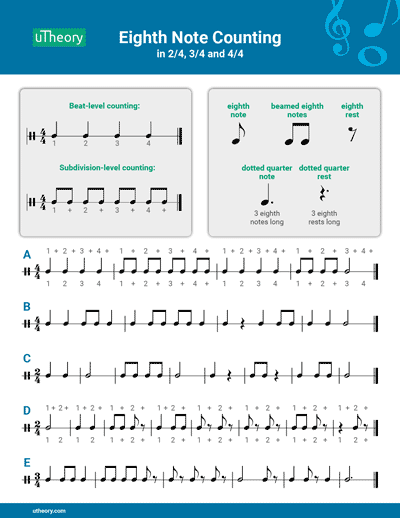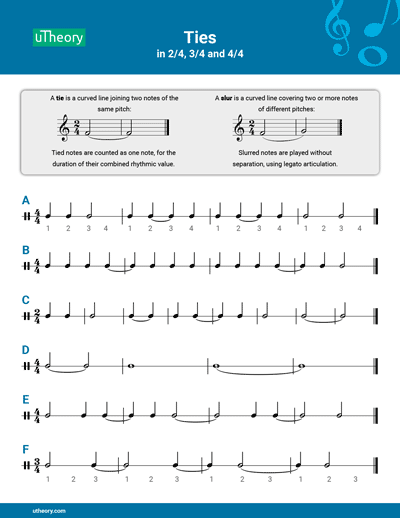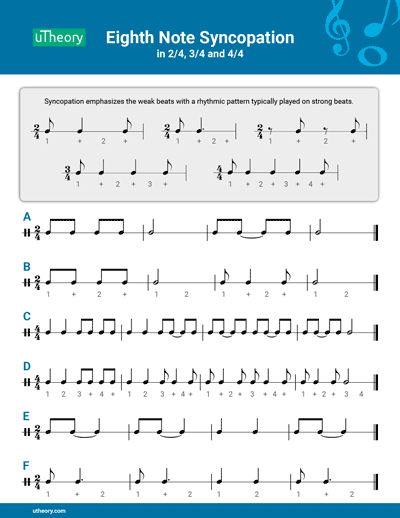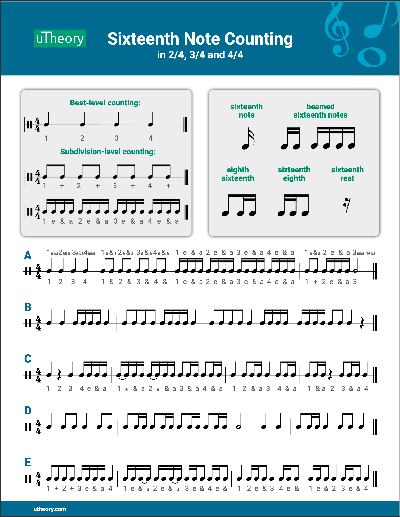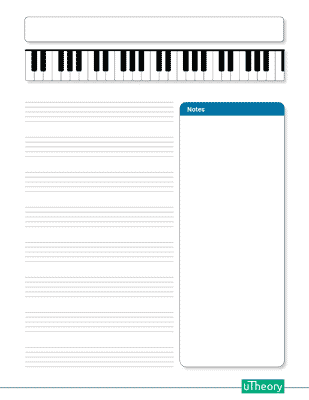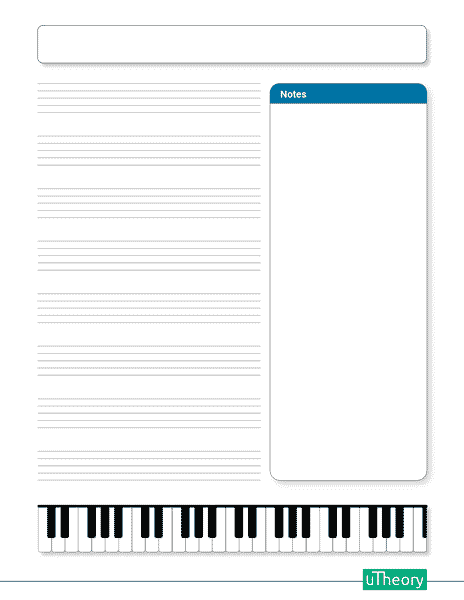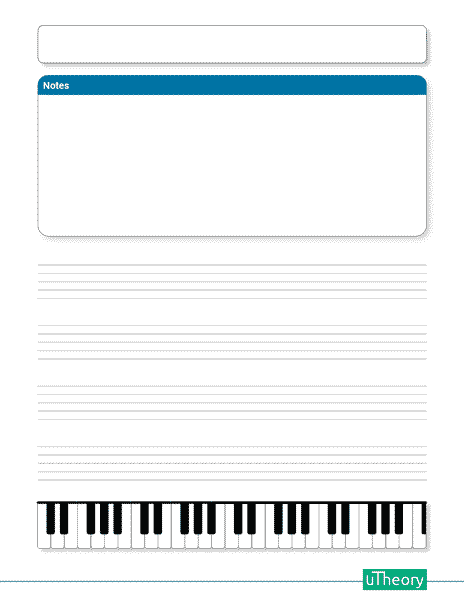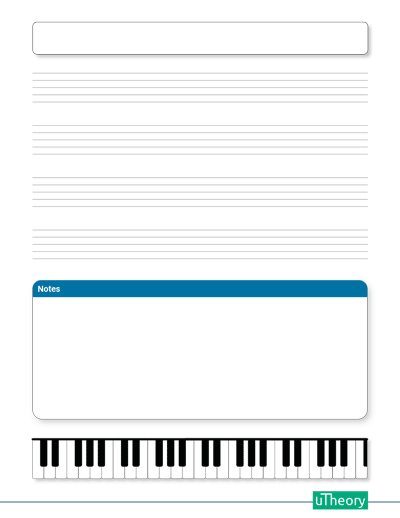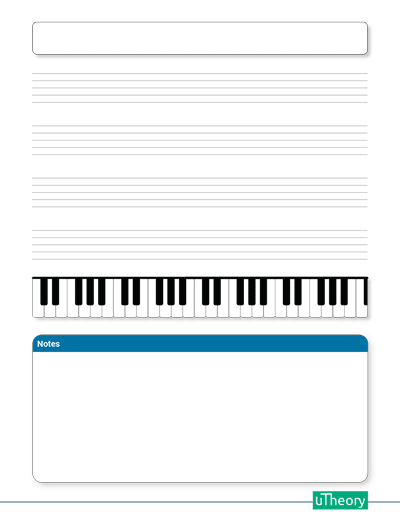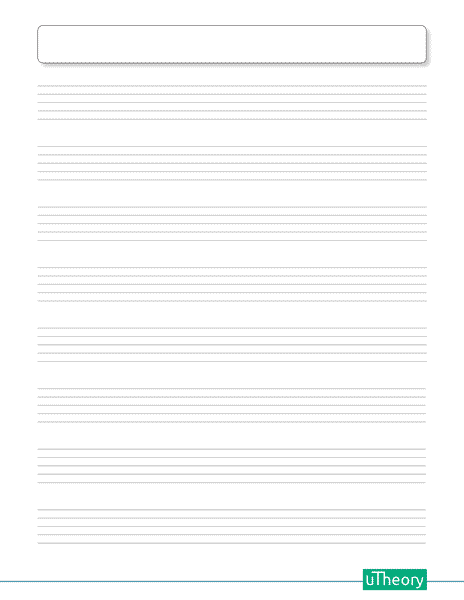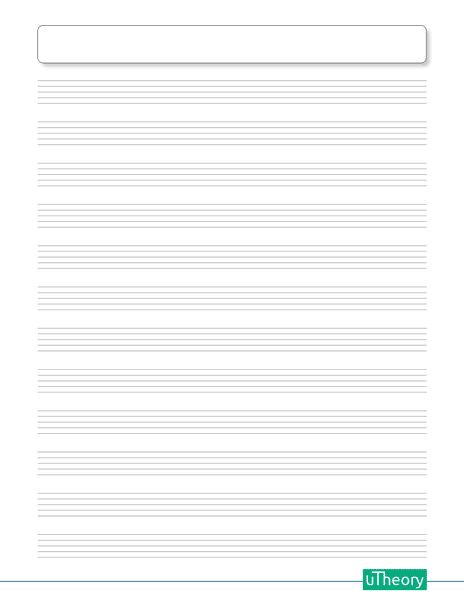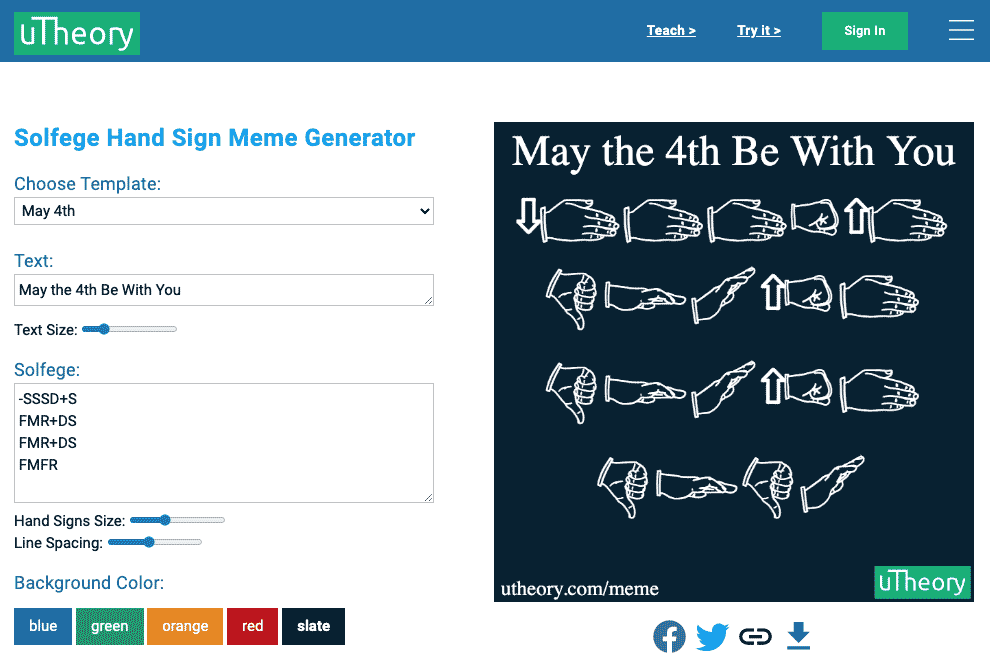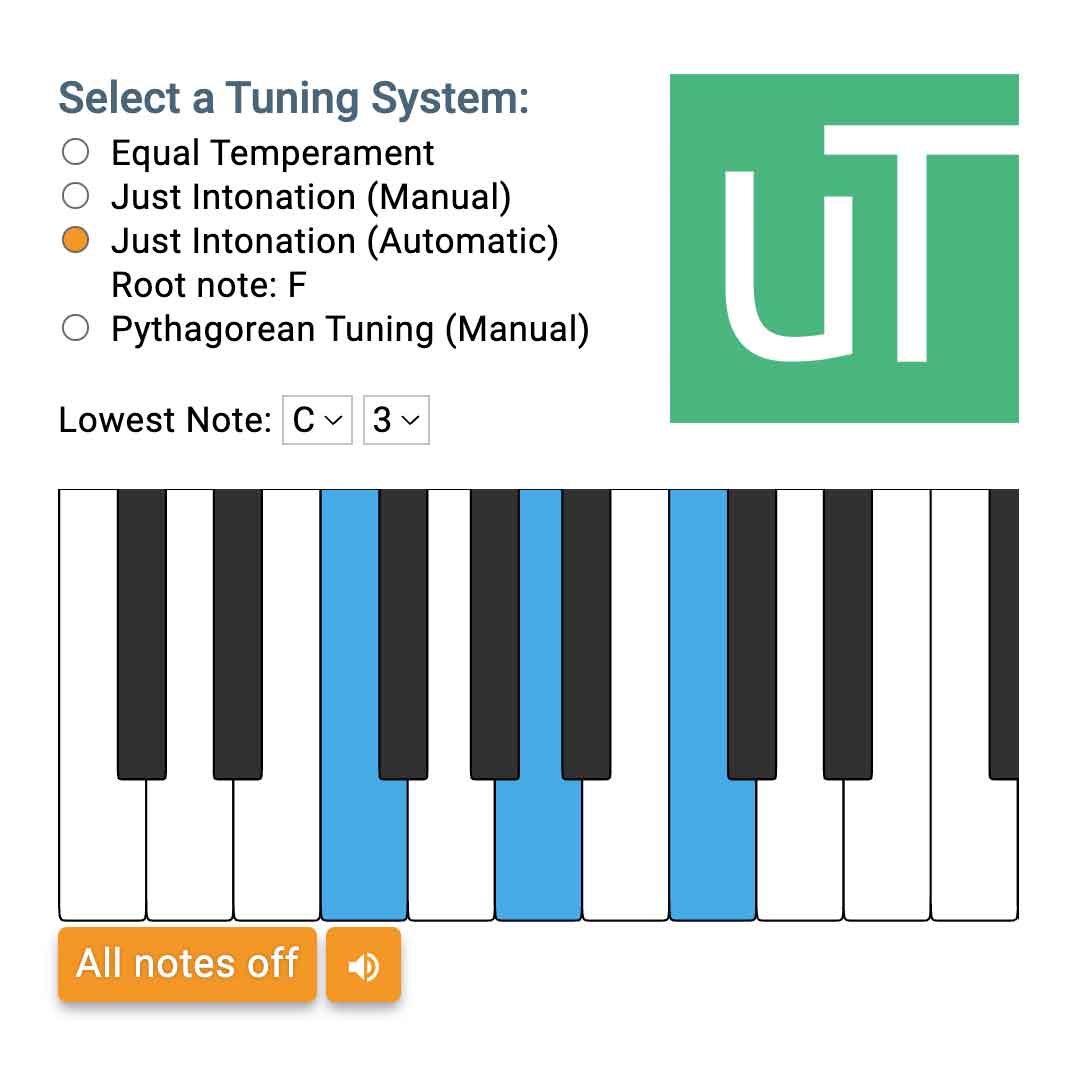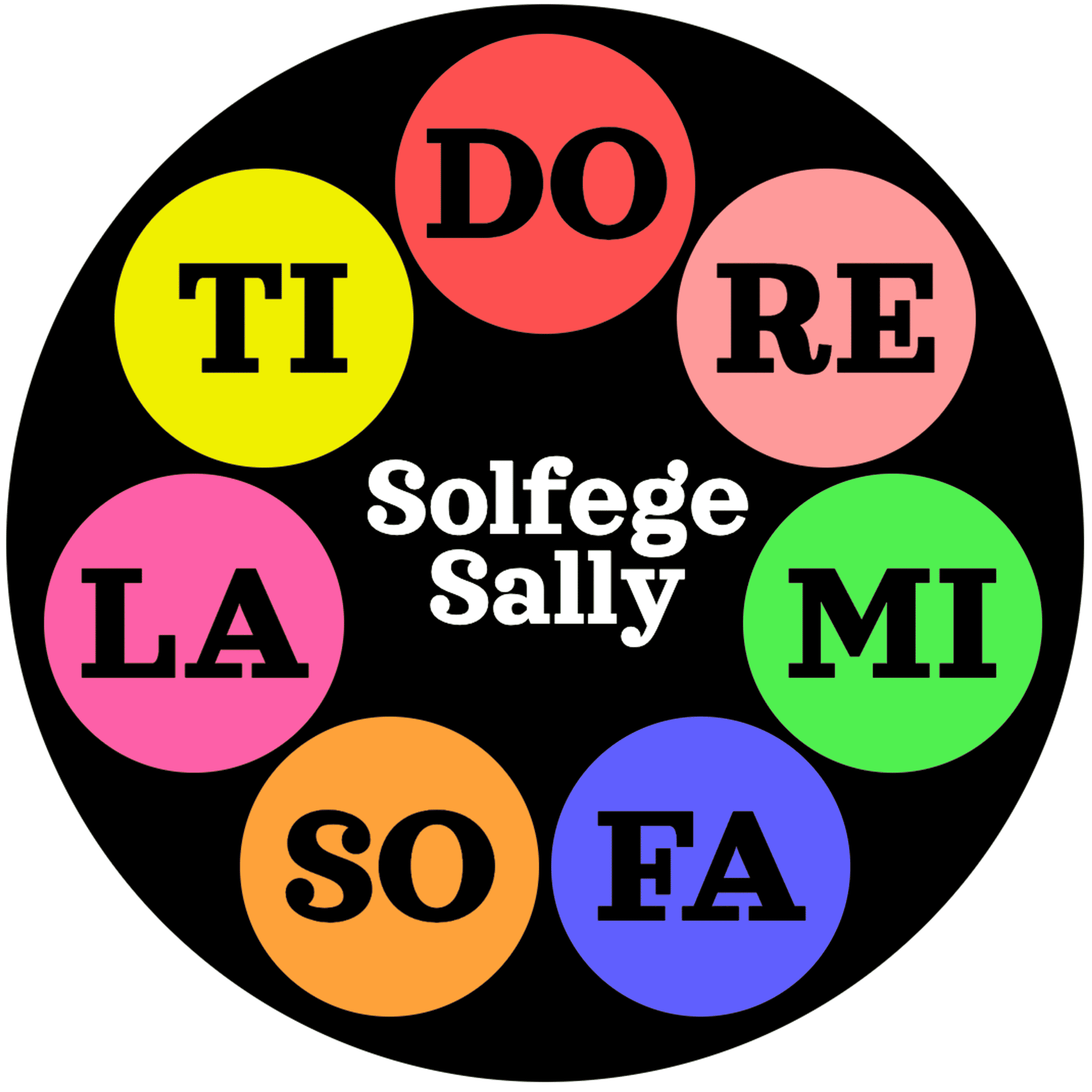Music Theory Resources
Music Theory Resources
In addition to our lessons and practice for music theory, rhythm, and ear training, uTheory is pleased to share these free resources for your students and classes.
Music Fundamentals
Handouts for note reading, keys, intervals, and other music fundamentals.
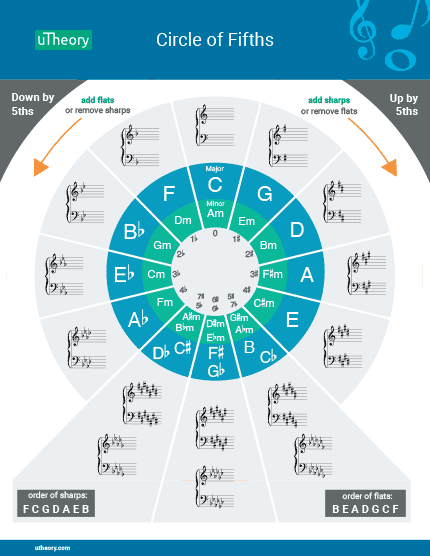
Printable Circle of Fifths, with both Major and minor keys, the order of sharps and flats, and key signatures drawn on the grand staff.
Rhythm
Handouts for teaching rhythm reading and counting.
Staff Paper for Music Theory Note Taking
Designed for the music theory classroom, our printable manuscript/staff paper includes space to take notes and a piano keyboard. It's also great for use in private music lessons!
Online Resources
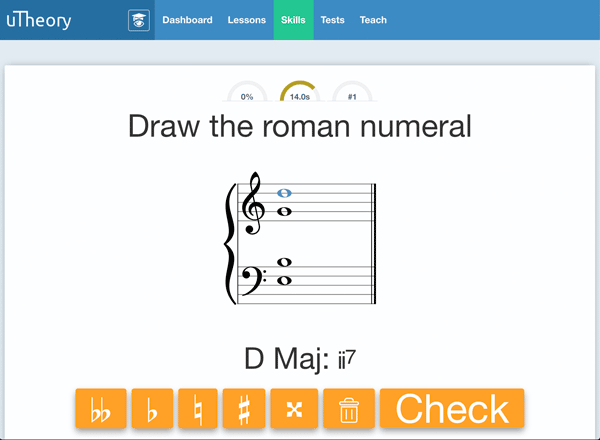
Practice exercises for clefs, scales, intervals, triads, roman numerals, rhythm, ear training, and more.
Like this? Consider teaching with uTheory, the most interactive way to teach and learn music theory. Find out why students and teachers alike love uTheory. Teachers, register for your free teacher account. Learners, you can start mastering music theory now.
